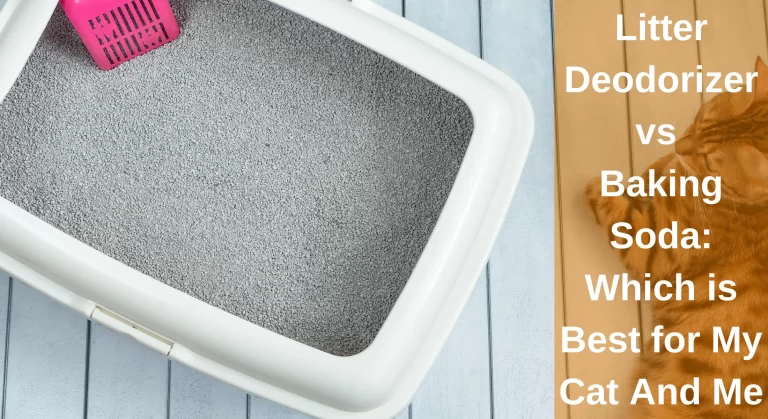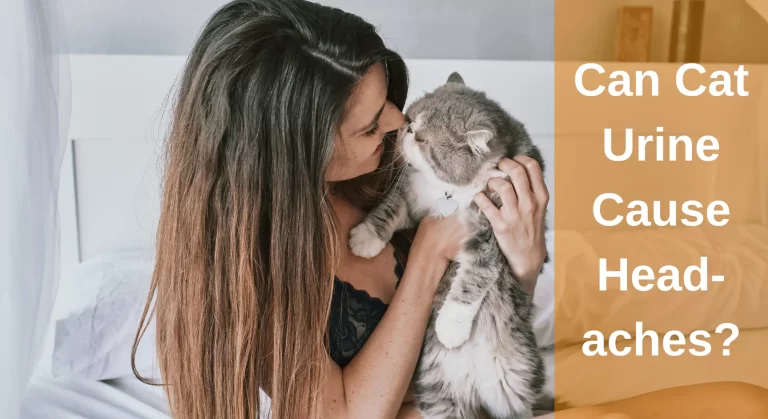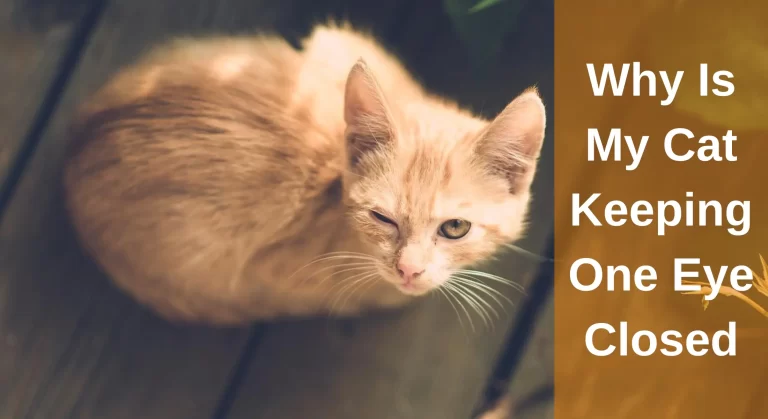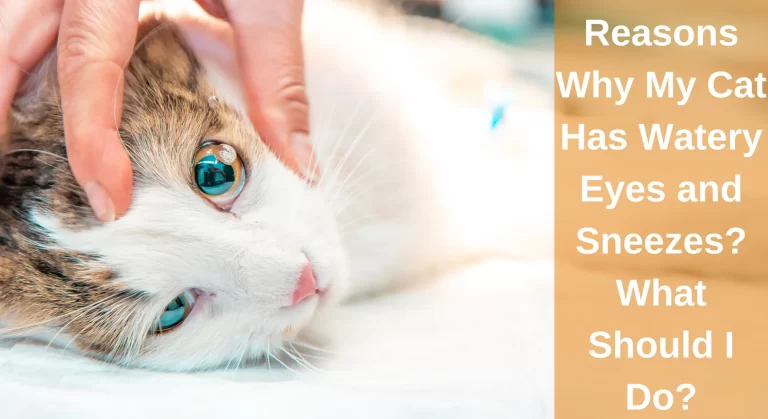The Ultimate Guide to How to Get Cat Pee Out of a Couch? [Easy Methods]
Cats are very proper creatures. They are constantly grooming themselves, and they bury their waste after they use the litter box. No wonder it comes as a shock when you discover a rancid wet spot on your sofa, with your cat next to it, pulling off the most innocent face you have ever seen.
How to get Cat pee out of a couch? Cats pee out of their litter box for a few reasons, all of which will be explained below. Also, cleaning the spot is crucial, or else your cat will do their business there again. I will explain exactly how to clean your furniture.
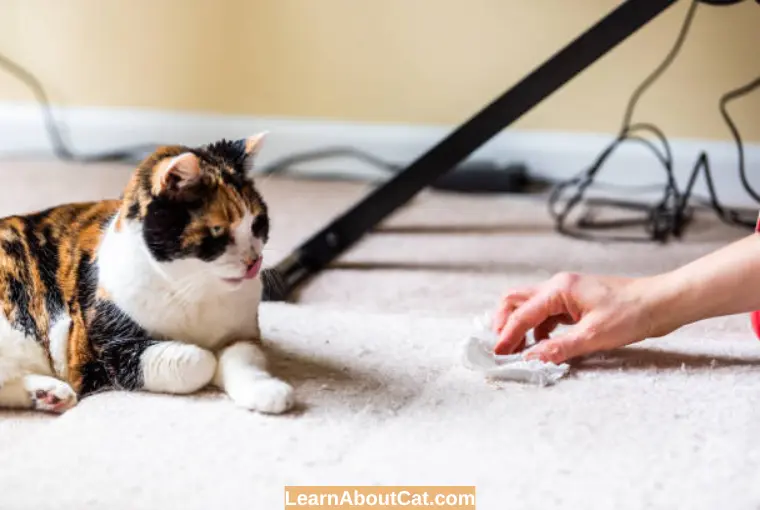
How to Get Cat Pee Out of the Couch?/ Easy Methods to Clean Cat Urine Out of Your Sofa?
There are a few DIY ways to get urine out of a sofa with ingredients lying around at home. If these work, it might save you a trip to the grocery store. First, you will want to soak up as much of the urine as possible with paper towels, then use one of the following methods to clean the rest:
1. Baking soda
This magical white powder is known to get out even the toughest of stains, and it’s present in most kitchen cabinets. It will also remove the foul odor from your sofa, preventing your cat from peeing again. Simply cover the stain with a thick, even layer of baking soda, let it sit for 30 minutes, and then vacuum it. Repeat if necessary.
Check Out: Litter Deodorizer vs Baking Soda: Which is Best for My Cat and Me
2. Vinegar
Vinegar is also easily available in your kitchen pantry. It works because of its highly acidic nature, killing the bacteria responsible for producing this smell. You will need to mix the vinegar in a spray bottle with water in a 1:1 ratio, then spray over the area. Allow it to dry, then repeat if necessary.
3. Hydrogen Peroxide
You can use hydrogen peroxide after using vinegar to further eliminate the stench. Hydrogen peroxide is more oxidizing than chlorine, so it effectively gets rid of ammonia in the stain.
Simply apply hydrogen peroxide to the stain, allow it to sit for five minutes, and then blot the area. Because of hydrogen peroxide’s bleaching properties, you should do a patch test first.
4. Baking Soda and Vinegar together
Baking soda and vinegar together make one of the most powerful stain lifters out there. Not only is it a fun science experiment, but the carbon dioxide produced during the reaction also lifts the stain effectively. At the same time, baking soda removes odors, and vinegar kills bacteria.
All you need to do is to pour a generous amount of baking soda on the stain. Allow it to sit for a while, then pour a ratio of 1:1 vinegar and water mixture on top. Let it fizz and bubble before cleaning it off with paper towels. Repeat if necessary.
5. Enzymatic Cleaner
If the above methods do not work, you will need to run to the grocery store to buy an enzymatic cleaner. Enzymatic cleaners break down molecules into smaller and smaller parts until they are engulfed by bacteria.
When shopping for an enzymatic cleaner, keep an eye out for ones made specifically for urine, as they will have the necessary enzymes to break down cat urine.
Check Out: How to Get Rid of Cat Pee Smell?
What Cleaning Products Should I Avoid?

There are a few products that can worsen the issue or damage your sofa; these products should be avoided:
Bleach: While bleach is super strong and effective at removing bad smells and soiled spots, it will also destroy your sofa. It should be avoided.
Ammonia: All cleaning products with ammonia in them should be avoided. Even though they can do a solid job cleaning up the mess, urine contains ammonia, so your cat will confuse the cleaner with its own urine and think it is okay to pee on the couch again.
Steam: Stay clear from steam cleaners as they will simply push the contents deeper into your sofa; this makes stains more difficult to remove. Opt for a vacuum cleaner instead.
Interesting Reading: Can Cat Urine Cause Headaches?
Why Do Cats Pee on Your Couch?
Now that we have talked about ways to get rid of the mess let’s discuss why cats exhibit such bizarre behaviour in the first place.
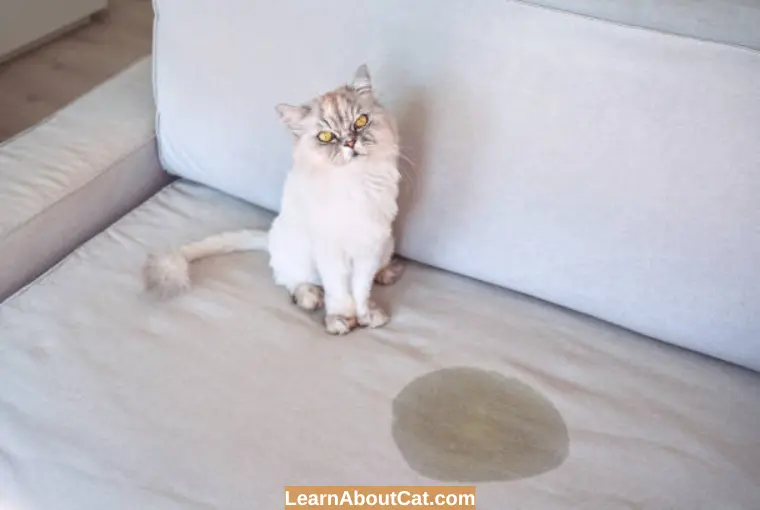
Problems with their Litter box
Cats are very proper creatures. They like to have a private corner to do their business and then properly conceal it with soil or litter. So if your furry friend is opting for an odd place, there is probably something wrong with where they normally go. For instance:
- Size: Your cat’s litter box should be at least one and a half times bigger than its total body length, so it can comfortably use it without feeling squished.
- Type: There are many different designs of litter boxes; make sure to pick one suitable for your feline’s needs. For example, high-spraying cats need enclosed litter boxes, geriatric cats need a low-lying design and some cats like a top-entry litter box.
- Cat litter: There are many commercially available litters. Choose one with no added scent and doesn’t kick up a lot of dust.
- One litter box per cat: Your cat will never share its litter box with another feline. You will need to arrange each pet its own litter box.
- Position: Make sure to place the litter box in a quiet corner of the house, away from its food and water.
Illnesses
There are certain diseases that make it hard for your pet to get to the litter box in time, for example:
- Arthritis: Many felines develop this as they age. It is the inflammation of their joints, making movement stiff and painful, so your senior cat would prefer the sofa’s comfort to make a trip to the litter box.
- Diabetes: Diabetic cats have high blood glucose, so their kidneys filter out this excess blood sugar. Because glucose attracts water with it, your pet will need to pee frequently and urgently, which means they might need to make several trips to the litter box, so it makes sense why accidents are common in this condition.
- Kidney disorders: When a feline’s kidneys malfunction, they lose urine concentrating capabilities, so water is not reabsorbed, and a lot of urine is produced, which makes accidents a frequent happening.
- Feline Cognitive Dysfunction: This is a condition of older cats. As their brains age, they become unable to remember where or how to use the litter box.
Also Read: Can Cat Wear Diapers? Cat Diapers 101
To Mark Their Territory:
Unlike cats accidentally messing up your furniture due to a medical condition, felines who pee around your house to mark their territory do it deliberately. They will spray a bit of urine, with their back end in the air and tail high and shaking, which is different from how they use their litter box.
Cats do this because they feel stressed or threatened, so they spread their pheromones to let other felines know of their presence. They may feel threatened by the neighbor’s cat, outdoor cats, shifting houses, or because of a new addition to the family like a new baby.
Cats also spray to attract a mate. If your cat is not spayed or neutered, they spray their urine around to spread their pheromones. Spraying pheromones around is a way for them to attract the opposite sex.
Find Out: How To Stop A Cat From Peeing On Clothes?
How to Protect the Couch from Cat Pee?
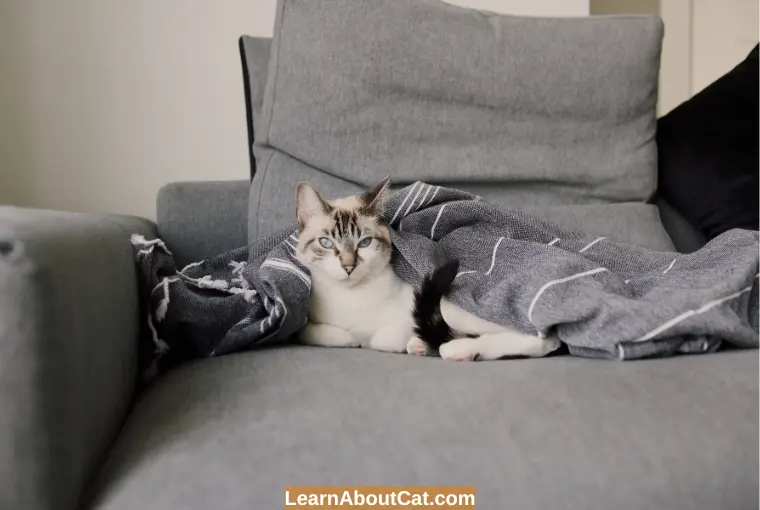
- Clean your sofa correctly: If your cat smells remnants of its urine from the couch, it will think of it as its pee spot and urinate there again.
- A clean litter box is vital: Your cat will not go in a dirty litter box; they will simply do their business elsewhere.
- Ensure the litter box is large enough: If your pet is urinating over the edge of the litter box, chances are they don’t fit into it. They will take matters into their own hands and find a more comfortable place to do their business.
- Make sure the litter box suits its needs: You need to choose a litter box that is easy for your pet to access. If you have multiple cats, each one will require its own litter box.
- Get your pet spayed or neutered: If your cat pees around to attract a mate, getting it spayed or neutered will solve this problem.
- Visit the vet: Get a thorough check-up for any medical conditions that may be making your cat pee in places other than its litter box.
- Help your pet de-stress: Stress can cause your cat to act out by peeing in inappropriate places. Cats love routine, so make sure to stick to one. Try to identify their triggers and remove them. Purchase an elevated space for them and places to hide. Buy a pheromone diffuser, which releases pheromones to relax your cat.
- Sticky tape: You can surround your sofa with double-sided tape or pieces of tape folded onto itself. Cats do not like the sticky feeling of tape on their paws, so they will stay away from the sofa.
- Purchase a couch protector: Adding a physical barrier between your cat and your couch may be necessary if everything else fails. Getting a couch protector will save your furniture from cat scratches as well.
Also Check Out: How to Keep Cat Litter Off the Floor?
Frequently Asked Questions
The Bottom Line on How to Get Cat Pee Out of a Couch
Having read this article, you can not only successfully clean your couch, but you can also figure out why your cat is peeing on the furniture and what to do about it. With our help, we hope your cat peeing on the furniture will now become a thing of the past.
Related Posts:
Who is Isabella?
My name is Isabella, and I am a dedicated and knowledgeable cat enthusiast. With years of experience caring for cats and a deep love for felines, I made a mission to help other cat lovers navigate the challenges of cat ownership.

